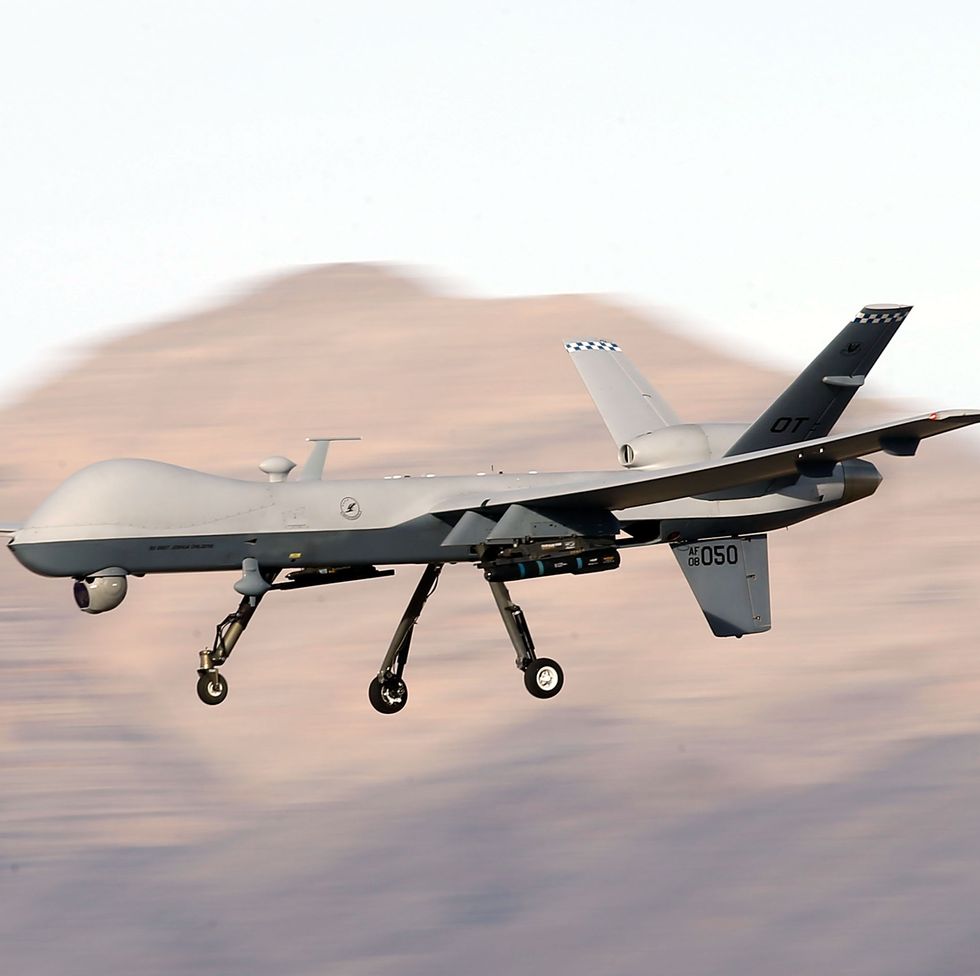Post by whitehorse on Mar 15, 2020 3:02:50 GMT
The U.S. Air Force Wants To Replace the Reaper
The Reaper is the go-to attack drone for the Air Force (and CIA).

Air Force Works To Meet Increased Demand For Remotely Piloted Aircraft
Isaac BrekkenGetty Images
The MQ-9 Reaper drone is the backbone of the Air Force’s armed drone fleet.
As the U.S. shifts to preparing for high-end fights against major adversaries, the Reaper is coming up short.
The Reaper’s replacement will likely be a more stealthy, survivable drone capable of evading missile defenses.
The U.S. Air Force wants to replace the service’s fleet of Reaper attack drones with something new capable of surviving in hostile airspace. Although highly successful at what it does, the MQ-9 Reaper is easily shot down and would not survive over a battlefield protected by modern air defenses.
Advertisement - Continue Reading Below
The MQ-9 Reaper drone was first introduced in 2007. Bigger, faster, more heavily armed than the original Predator drone, the Reaper has excelled in flying missions over places like Iraq, Afghanistan, Yemen, and Somalia. In uncontested airspace the Reaper can linger for hours, waiting for the right moment to unleash a Hellfire missile or laser-guided bomb. The Reaper is the largest known armed drone in the Pentagon’s inventory. In addition to the Air Force, the CIA operates a small number of Reapers reportedly involved in using the "Flying Ginsu" Hellfire R9X missile.
But in contested airspace, it’s a different story. The Reaper lacks the equipment modern warplanes have to keep them alive over the battlefield, including missile warning systems and anti-missile chaff and flares. In particular the insect-looking Reaper lacks stealth, with sensor pods and weapons hanging off wingtips producing a large radar signature. If an enemy missile launches against a Reaper, there’s little the remote pilot can do about it—if he or she even notices the launch.
The Pentagon is shifting from smaller, low-end fights in Afghanistan, Iraq, and elsewhere towards larger, higher-end brawls potentially with countries such as Russia and China. Realizing the Reaper's vulnerability, Air Force is cutting its buy of Reaper drones to 337, according to Military.com, with the final 21 drones purchased this year. The Air Force will lay out its vision of a replacement, one that can operate in contested airspace, in the 2022 budget.
What will replace the Reaper? A replacement will likely be stealthy, to keep it off radars and minimize it as a target against radar-guided missiles. A flying wing design, like the B-2 and B-21 bombers, is possible. One benefit of the flying wing is a large fuselage for stowing fuel and weapons—a stealthy aircraft must conceal everything within the shape of the aircraft.
The key for the new drone is affordability. Stealthy aircraft get expensive very quickly, and one great advantage of drones over manned aircraft is that they are cheaper. The Reaper costs $64 million each, versus $95 million for a F-35 Joint Strike Fighter. If the Air Force wants to replace Reapers on a 1:1 basis, the replacement will have to be cheap enough to be purchased in large quantities.
Source: Military.com











